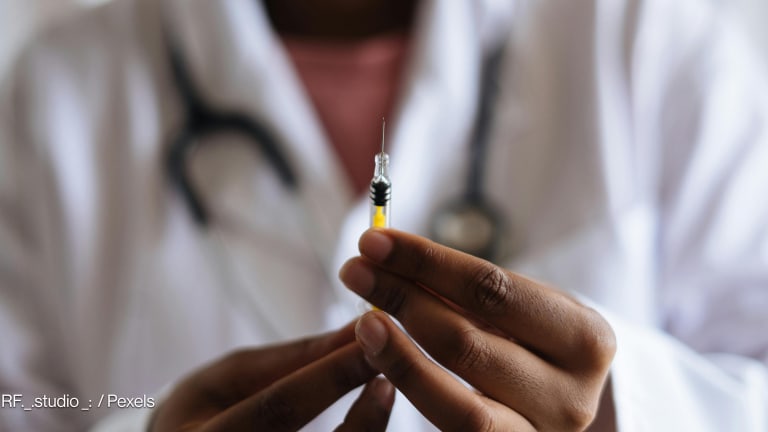
MANILA — Janssen Pharmaceutica has revealed new data about its investigational HIV vaccine candidate at the 10th International AIDS Society Conference on HIV Science taking place in Mexico City.
With the addition of a bivalent soluble protein to the regimen, the data shows “improved” immune responses to different HIV strains including those predominant in the Americas, Western Europe, and Australasia.
“HIV is genetically diverse, more so than any other pathogen.”
— Susan Buchbinder, protocol chair, MosaicoThe results were from Janssen’s ASCENT trial, which evaluated 152 healthy adults in Kenya, Rwanda, and the United States. The trial made use of the organization’s “mosaic” HIV vaccine, named so as it combines immunogens created using genes from different subtypes of HIV-1, the most common HIV type.
Hanneke Schuitemaker, vice president and head of viral vaccine discovery and translational medicine at Janssen, said the company is “encouraged” by the trial’s results, which helped support the launch of the phase 3 trial, a larger efficacy trial of the vaccine to be conducted across three continents — North America, South America, and Europe.
The phase 3 trial called Mosaico, which the company plans to launch this year together with partners from the public sector, aims to test the protective efficacy — meaning its ability to reduce the infection risk of a vaccinated individual — of the vaccine candidate among 3,800 men having sex with men and transgender individuals. They are part of the five key populations considered particularly vulnerable to HIV but who often lack access to HIV services.
Key populations account for 54% of new HIV infections globally, according to the latest data published by UNAIDS last week. Men who have sex with men have 22 times the risk of acquiring HIV, while it’s 12 times for transgender people.
By focusing on the three continents, the trial also aims to test the vaccine in geographical locations where HIV subtype B is dominant. A separate, ongoing phase 2 efficacy trial of the vaccine in southern Africa, meanwhile is targeted at women at high risk of HIV infection.
How to address HIV/AIDS stigma in health facilities to achieve UHC
Reducing HIV/AIDS stigmatization and discrimination is critical if the 90-90-90 target is to be achieved by 2020. Devex explores some of the most impactful strategies.
“They are living in a population where the incidence of HIV infection is higher as compared to other areas. And for women in that area, the incidence can be really high even if you don't select for them. We recently saw an outcome of a study where HIV incidence [in that population] was monitored and it was 4%,” Schuitemaker told Devex.
They don’t have current trials of the vaccine in Asia, but they are discussing with colleagues in China, she said.
Schuitemaker said they are testing in different geographic locations and at-risk populations as they are hoping to develop a “global HIV vaccine.”
There are two main HIV types. Under HIV-1 accounts for 95% of infections globally, according to AVERT. But even under HIV-1, there are a variety of subtypes, some more dominant in particular geographical locations. For example, subtype C is common in southern Africa, countries in the Horn of Africa, and India.
These variations are part of the challenge as to why the world still does not yet have an HIV vaccine to date. Very few HIV vaccines have reached human efficacy trials to date.
“HIV is genetically diverse, more so than any other pathogen, has a complex outer structure or envelope and the HIV subtypes in the different regions of the world vary,” said Susan Buchbinder, protocol chair for Mosaico.
In addition, the transmission of HIV can come through multiple routes or exposures, and “nobody has ever spontaneously recovered from HIV infection. So there is no natural correlates of protection or that we know what protective immune response would look like,” leading to a “lot of guessing,” Schuitemaker said.
While she thinks there’s been a lot of improvements over the years, human efficacy data is key.
“We won’t know whether or not a vaccine will prevent HIV acquisition until it is tested in human efficacy trials. However, in preclinical trials, a regimen similar to the one being used in this [Mosaico] trial provided high levels of protection in challenge studies,” Buchbinder said.
Janssen hopes to have results of its phase three trial in 2023. It is expecting enrolments of its target population to take one and a half years. The vaccine regimen it is testing involves four immunizations in a span of one year, given every three months. Follow-up period starts after the third dose and will take one and a half years.








